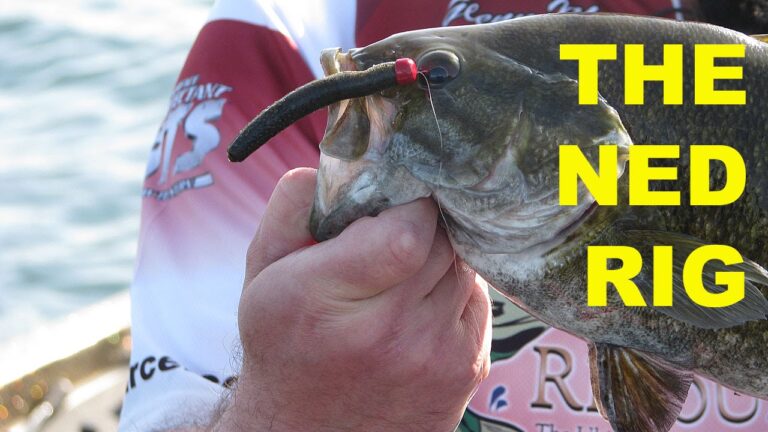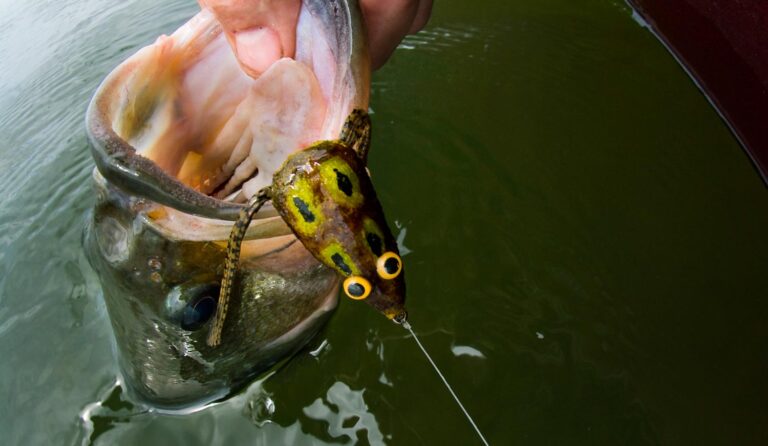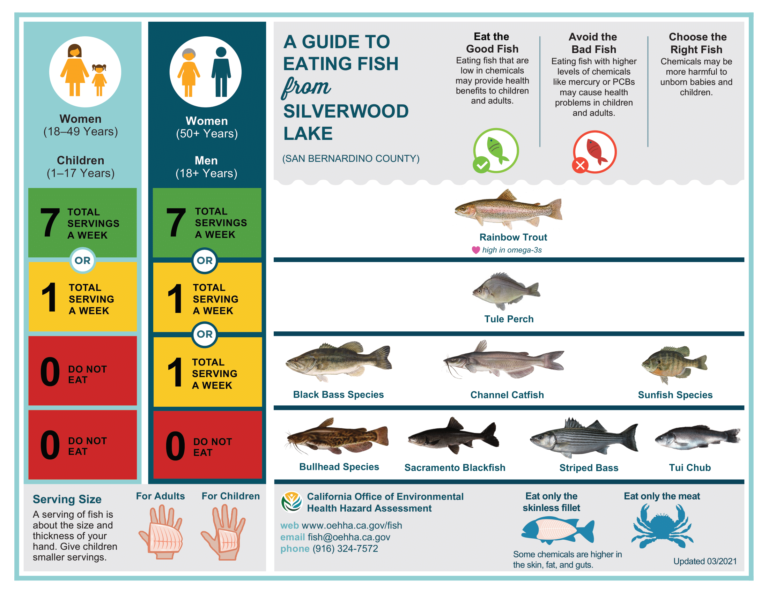How to Fish a Jerkbait for Bass
To effectively fish a jerkbait for bass, utilize erratic retrieves and pause frequently. Match the jerkbait’s color with the conditions and target depth spots.
Bass fishing with a jerkbait can be an extremely productive method, especially in cooler waters where bass are less active. These lures mimic the movement of injured baitfish, which is irresistible to predatory fish like bass. Selecting the right jerkbait involves considering water clarity, light conditions, and the prevalent forage in the ecosystem.
Understanding the nuances of jerkbait fishing dramatically increases your chances of success. Key tactics include working the bait with sharp jerks followed by strategic pauses, allowing the lure to suspend or slowly rise, triggering a strike from following bass. It’s essential to maintain a rhythm that keeps the bait in the strike zone longer, to maximize your catch rate. Whether you’re a novice angler or an experienced pro, mastering jerkbait techniques will bolster your bass fishing repertoire.

Credit: midwestoutdoors.com
The Allure Of Jerkbaits
Jerkbaits lure bass with their erratic movements and realistic appearance. Their sudden jerks and pauses mimic wounded fish. This action is irresistible to bass, often triggering an aggressive strike. The success of jerkbaits isn’t limited to just one season. They are versatile lures that can yield results throughout the year.
During spring and fall, bass are especially active. At this time, water temperatures make bass more eager to chase a jerkbait. In colder months, a slower retrieve with longer pauses can be more effective. This matches the sluggish behavior of natural prey in cold water. By varying the retrieve speed and rhythm, anglers can use jerkbaits to catch bass in different conditions.

Credit: www.youtube.com
Selecting The Perfect Jerkbait
Selecting the perfect jerkbait is crucial for catching bass effectively. Bass are more likely to strike baits that mimic their prey in size. A 4 to 6-inch jerkbait often yields the best results. It’s essential to match the hatch, meaning your lure should mirror the native fish in the area.
Choosing the right color and pattern can make a big difference. Clear water calls for natural colors like silver or gold, while murkier waters require brighter colors or patterns that stand out to bass. Match the color to the water conditions and prey species.
Depth range is another key factor. Each jerkbait model dives to a specific depth. Choose one that reaches the area where bass are feeding. Shallow divers work well in depths of 1-4 feet, whereas deeper divers are suitable for fishing below 4 feet. Pay attention to the rated diving depth on the jerkbait packaging.
Gear Essentials
Selecting the right rod and reel combo is crucial for jerkbait fishing for bass. Go for a medium-light to medium action rod, 6 to 7 feet in length. This will give you better control and the ability to impart quick jerks effectively.
The reel should be a fast gear ratio, around 6.3:1, which allows for quick line pick up. For line types, opt for fluorocarbon because it’s nearly invisible in water and has the right amount of stretch. It also helps jerkbaits dive a bit deeper. A line strength between 10-12 pounds strikes a good balance for most scenarios.
Mastering The Jerkbait Technique
Mastering the Jerkbait Technique requires a blend of skill and timing. Effective twitching and pausing can mean the difference between success and failure.
Consistent rhythm attracts bass, mimicking injured prey. A quick snap of the rod tip, followed by a pause, lets the jerkbait glide and settle. This imitates a dying fish.
Controlling Jerkbait Speed is crucial – slow retrieval in cold water, faster in warm. Bass are more active when warm, thus respond better to speed.
Weather and Water Conditions also play roles. Clear, sunny days may require subtle movements; overcast conditions can tolerate more aggressive jerking. Always consider these elements when planning your strategy.
Location And Presentation
Finding the right spot is key for jerkbait fishing. Look for areas with quick access to deep and shallow water. Bass often hide here for ambush. They love spots with structure and cover, like fallen trees, weed beds, and docks. Aim to cast your jerkbait parallel to these structures. This makes your lure more visible to bass.
For effective jerkbait casting, use sharp, erratic twitches. Reel in the slack after each twitch. This makes your jerkbait dart and pause, just like real fish. Such movements tempt bass to strike. Remember to vary your speed. Sometimes, slow twitching wins. Other times, quick jerks catch the bass’s attention. Watch your line closely. Most bites occur during the pause.
Advanced Tips And Tricks
Fishing for bass with jerkbaits involves tactical adjustments with the changing seasons. Temperature shifts greatly affect bass behavior and feeding patterns. Match your jerkbait to the water temperature. Use lighter, subtler movements in cold water. Aggressive jerks are better in warmer conditions.
Many anglers face issues like ineffective hooksets or lures that don’t suspend properly. Ensure hooks are razor-sharp for solid hooksets. Balance your jerkbaits by tuning them or adding weight to suspend correctly. Making these tweaks can dramatically increase your success rate.
Fish finders and GPS technology are invaluable. Use these tools to identify underwater structures and locate bass. Precision casting to these areas can yields more strikes. Take time to learn your electronics, study the water, and adjust your technique accordingly. This approach often leads to a bountiful catch.

Credit: www.wikihow.com
Frequently Asked Questions Of How To Fish A Jerkbait For Bass
When Should You Fish A Jerkbait?
Fish a jerkbait during cooler months, particularly in early spring and late fall, when water temperatures range between 44 to 67 degrees Fahrenheit. It’s most effective for targeting suspended or lethargic bass.
What Fish Do You Catch With Jerkbait?
Jerkbaits effectively attract bass, northern pike, walleye, and a variety of game fish species. They mimic wounded baitfish, making them irresistible to predators.
What Rod To Throw A Jerkbait On?
Use a medium power, fast action spinning or casting rod around 6’6″ to 7′ for optimal jerkbait control and responsiveness.
What Is The Difference Between A Jerkbait And A Crankbait?
Jerkbaits are slender, mimic wounded fish with a twitching motion, and usually suspend or slowly rise in water. Crankbaits have a wider body, wobble when retrieved, and consistently dive to predetermined depths depending on their design. Both are effective lures for predatory fish.
Conclusion
Mastering the jerkbait technique can greatly increase your bass fishing success. As we’ve explored, key factors such as gear selection, retrieval speed, and seasonal timing are crucial. Implement these tips on your next angling adventure, and you’re likely to see a noticeable uptick in your bass haul.
Happy fishing!





